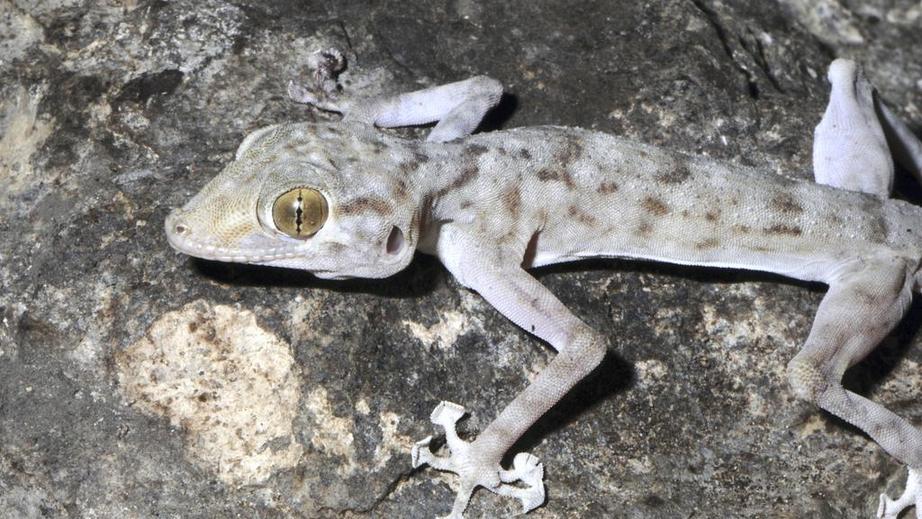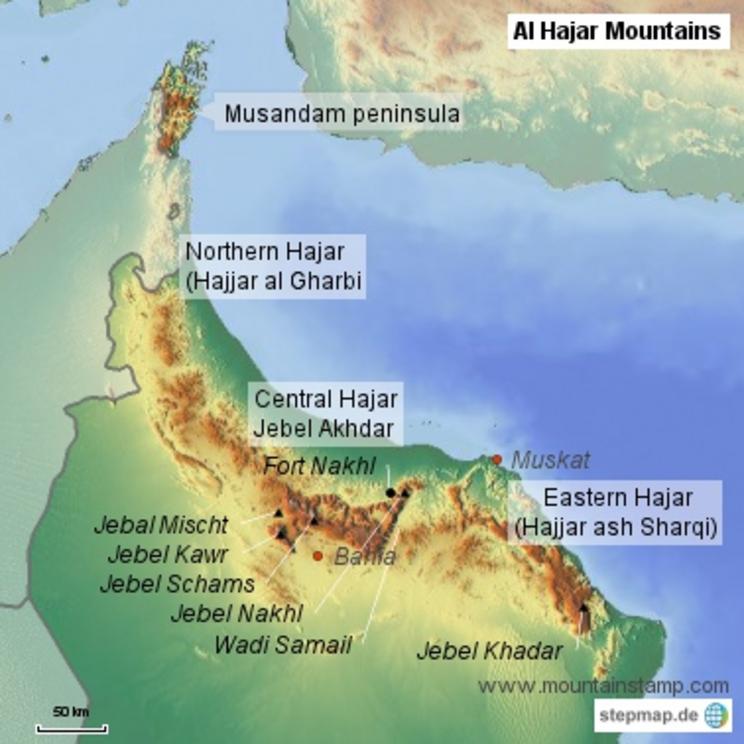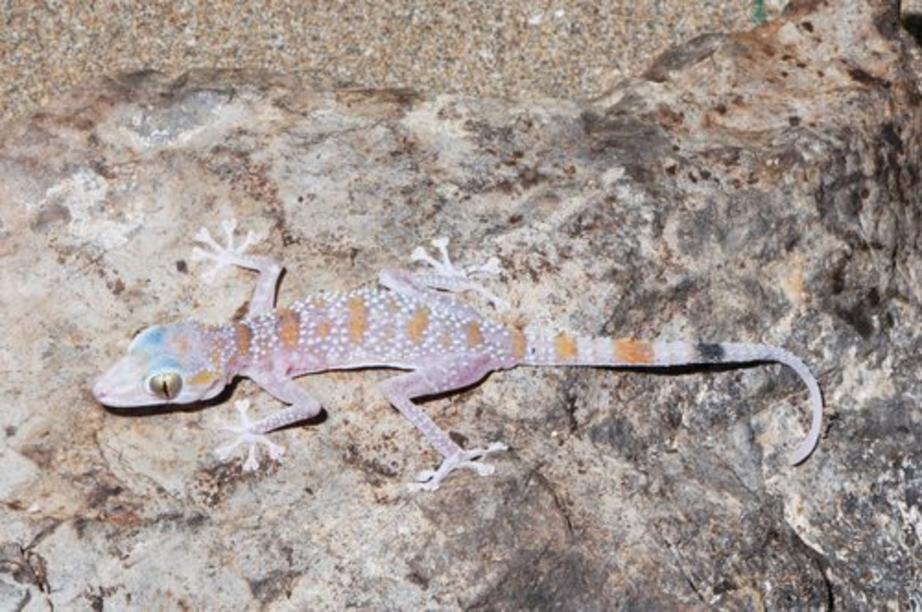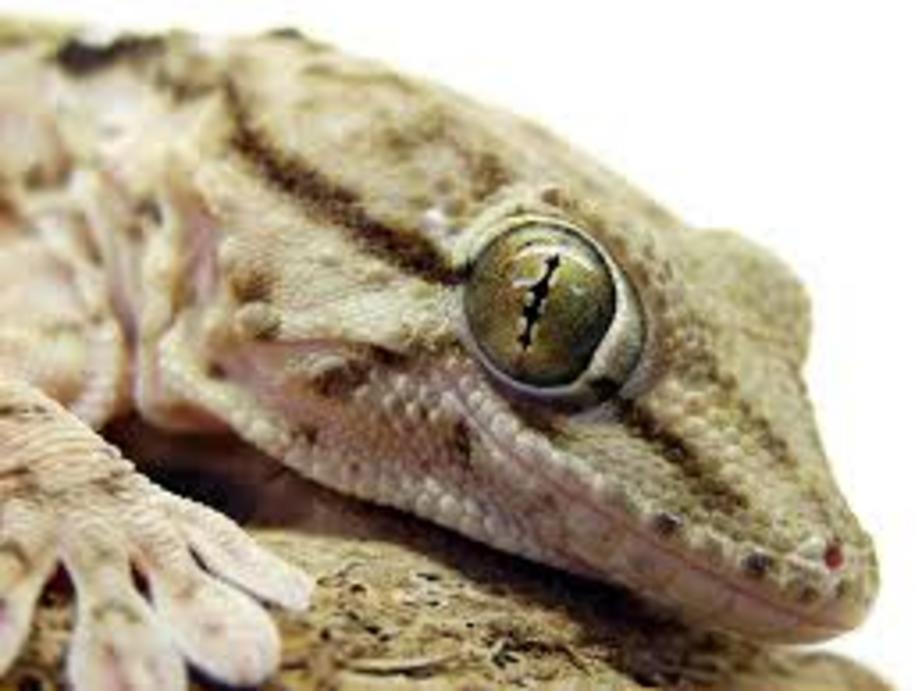Tiny gecko discovered in Hajar mountains
A team of international scientists discovered the 98mm reptile last month
The Ruus al Jibal — meaning “heads of the mountains” — refers to one of the highest areas of the Hajar mountain range. As of last month it also is the name of a new gecko species, discovered there this year by an international team of scientists.
At a length of up to 98mm, Ptyodactylus ruusaljibalicus may be tiny by human dimensions, yet it is among the largest gecko species. Unimpressed by its size, people are also unlikely to notice the key feature which differentiates this species from its cousin Ptyodactylus orlovi. The difference consists in four prominent scales near the cloaca which ruusaljibalicus has and its cousin lacks.

At a length of up to 98mm, Ptyodactylus ruusaljibalicus is among the largest gecko species. Salvador Carranza
“In the eye of the average person, if you look at the two geckos, you will say they look exactly the same,” said Johannes Els, head of the herpetology and freshwater fishes department at the Breeding Centre for Endangered Arabian Wildlife and the Environment and Protected Areas Authority in Sharjah.
But for Mr Els and his colleagues the differences were quite distinct. These differences were also confirmed by genetic sampling carried out this year.

The scientists collected genetic material from 68 animals found in 46 locations in the Hajar mountains. Afterwards, a team from the Institute of Evolutionary Biology in Barcelona, Spain, extracted genomic DNA from ethanol-preserved tissue samples and sequenced six genetic markers.
“Several results in our research can help us define the two species, Ptyodactylus ruusaljibalicus and Ptyodactylus orlovi, as distinct,” said Marc Simó Riudalbas, a researcher at the institute.
The two species do not share any alleles in the four nuclear genes the scientists sequenced. This is important as it suggests the animals are reproductively isolated and are currently evolving as independent units.
The team also confirmed that the mitochondrial genetic divergence between the two species was higher than among other recognised species of the genus. The data suggests that the two species diverged seven million years ago.
Ptyodactylus ruusaljibalicus and Ptyodactylus orlovi are what scientists call cryptic species — morphologically similar species erroneously classified under the same name. These species are very similar in appearance to the point that the boundaries between them can only be identified with the help of molecular methods. Defining those genetic boundaries has an important role in conservation, said Mr Riudalbas.

“Species that are considered common, widely distributed and of low conservation priority may actually contain multiple morphologically similar species, each with small ranges and therefore of high conservation concern,” he said.
Mr Els said Ptyodactylus ruusaljibalicus lives in the extreme northern parts of the Hajar range in Oman and the UAE and is separated from its cousin by the Masafi depression.
The findings were published in early August in the journal Plos One.
The scientists suspect the new species is most likely endemic to the Hajar Mountains which means it is not present anywhere else in the world. This, as well as two discoveries from last year, show that the mountain range has incredible diversity when reptile species are concerned.
In 2016, a study revealed that geckos from the Hajar Mountains thought to belong to a single species (A caudivolvulus) should be reclassified as three.
Of the three species, one kept the designation A caudivolvulus (Emirati leaf-toed gecko), while another was named A gardneri (Gardner’s leaf-toed gecko) and the third named A margaritae (Margarita’s leaf-toed gecko), each in honour of scientists who made a valuable contribution to the study of lizards in the UAE.
There are 18 species of reptiles that are endemic just to the Hajar mountains, said Mr Els.
“They are not found anywhere else outside of the Hajar mountain range,” he said. “Documenting these animals that only occur here again highlights how important the Hajar mountain range is, particularly for Eastern Arabia.”
Like anywhere in the region, the mountain range is higher in diversity in reptile species compared to other taxonomic groups such as mammals and birds. The continued study of these animals can help inform conservation measures to ensure they are protected.
“Highlighting where these particular species occur in different areas of the mountain range, can be incorporated into conservation management plans by allocating certain areas for protected areas or for non-development purposes,” said Mr Els.
For the rest of this article please go to source link below.

